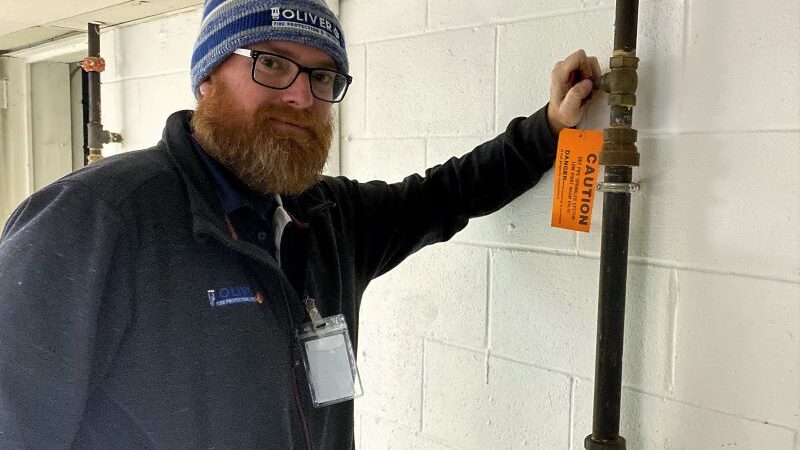Article by Joe Mackley – Account Manager
As the seasons change and the temperatures start to drop, it becomes even more critical that low point drains are managed on a regular basis. It is important for building owners and facility maintenance personnel to review some important inspection and maintenance tasks necessary to keep their dry pipe systems in good operational condition during the winter months. It is crucial to recognize that the National Fire Protection Association’s NFPA 25, Standard for the Inspection, Testing and Maintenance of Water-Based Fire Protection Systems provides a minimum set of requirements regarding their building’s fire suppression systems.
Even though dry pipe and pre-action sprinkler systems are designed to contain air or nitrogen during normal operating conditions, these systems will contain some residual water after testing and will even collect water through condensation as air is pumped into the system by the air compressor. Water vapor entering the system will condense inside of the system piping and will collect along the bottom of the system piping and at low points in the systems.
Because of these residual water pockets, it is very important to not overlook the maintenance requirement, to ensure that auxiliary drains are exercised. The purpose of these auxiliary drains is to provide a means for removing water from the system after testing or collected through condensation. NFPA 25 requires these drains to be exercised after dry pipe or pre-action valve operation, both inadvertent and intentionally through testing, before the onset of freezing conditions and as needed thereafter. The last portion of the statement is a reminder that opening the auxiliary once may not be sufficient and that additional draining may be required at subsequent times. Small amounts of water can disable the drum drips. As systems age the frequency that drum drips need to be checked can increase.
If water does enter the system, the pipe is now considered “wet,” and in an unheated space, it can freeze and burst, potentially causing significant property damage and business interruption.
Managing your low point drains during the winter months is a maintenance item that will go a long way to guard against these sorts of structural and financial losses.
Contact Oliver Fire Protection & Security to speak with our team about scheduling your next Fire Sprinkler Inspection.

